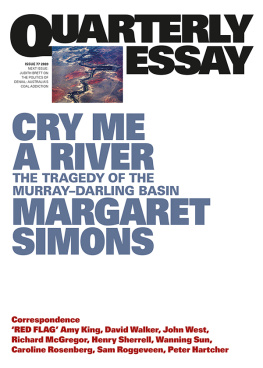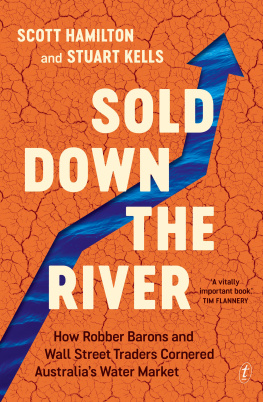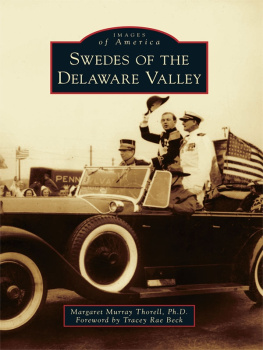PREFACE.
Lest this description of the River Murray should appear in some points to differ from the accounts of other travellers, it may be necessary to observe that the present little work is merely a Journal or daily record of what the writer observed during his voyage up the River, which was at the time considerably flooded, though it had not then attained its highest elevation, which occurs about December.
The English reader may also bear in mind that rivers in England are not the scale whereby to estimate the streams of other portions of the globe, or even of Europe, and that some of the larger rivers of that Continent are in like manner subject to the vicissitudes of dry seasons and partial floods.
This occurs particularly in Spain and in the South of France, as, for example, in the Rhone, which is materially influenced by the seasons in its volume of water.
In more tropical climes the difference is still greater; thus, the rise of the Nile is sometimes not less than thirty-eight feet, that of the Euphrates twelve feet, that of the Tigris twenty feet; whilst in India the large rivers are also increased or diminished in a considerable degree during the dry and wet seasons.
The English reader, therefore, the writer would again repeat, should not be surprised at hearing of the easy navigability of the greatest Australian river, or wonder that other works have stated the stream of the Murray as quite insignificant and ill adapted for steamers.
The voyage of the Lady Augusta steamer has proved the fact of the navigation being open for at least six months during a very dry season, and no doubt can exist that in ordinary years the River Murray may be used by steamers for at least seven months.
A system of embankments and occasional canals at a more distant day, when labour shall become abundant, will probably lay open the course of the river for a still longer period, although the present navigability has been deemed sufficient for all immediate purposes of traffic.
The first Navigators by Steam of the River Murray; or, a List of the Passengers, Officers, and Crew of the Lady Augusta Steamer and the Eureka Barge.
Passengers.
His Excellency Sir H. E. F. Young, Lieutenant-Governor of South Australia.
J. Grainger, Esq., M.L.C.Wm. Younghusband, Esq., M.L.C, and Agent for the Murray Steamers.R. Davenport, Esq., M.L.C.A. Kinloch, Esq., Clerk Executive Council.Geo. Palmer, Esq., Indian Civil Service.Geo. Mason, Esq., Sub-Protector of Aborigines.E. W. Andrews, Esq.,
South Australian Register.Travers Finnis, Esq.James Allen, Esq.Regd. Bright, Esq., (left the party at Swan Hill).H. Jamieson, Esq., of Mildura (joined the party on the river, at his own station).Mrs. Finniss.Mrs. Younghusband.Mrs. Irvine.Miss Sarah Younghusband.Miss Eliza Younghusband.Miss Louisa Younghusband.Isabella Williamson.
Officers and Crew of the Lady Augusta and the Eureka Barge.
Commander, Francis Cadell.
Lady Augusta.Wm. Davidson, Master.Wm. Webb, Chief Officer.R. Napier, Engineer.Thomas Nevin, Seaman.Henry Petrie, ditto.Robert Robson, Stoker.Evan Thomas, ditto.Wm. Cruise Teague, Stoker.Lewis Chandler, Chief Steward.John McAulay, Second Steward.Jemy, Native of China.Wm. Gylmour, Cook.Eureka.Edmund Robertson, Master.J. H. Copeland, Chief Officer (a native of New York).John Nelson, Purser (native of New South Wales).Jimmy (South Sea Islander).Tee Harry (South Sea Islander).Hy. Winsby, Carpenter.Neil McGregor, Carpenters Mate (from New Brunswick).Arman (Madrassee).Kurreem (Bengalee).James Giles.Three Wellington Blacks.One Police Trooper, John Phillips, joined the party, on duty, at Mr. Chapmans Paringa.
TotalForty-five persons.
JOURNAL
OF
VOYAGE ON THE MURRAY.
Amongst the anomalies which may be said to distinguish the continent of Australia from other inhabited portions of the globe, not the least remarkable perhaps has been the almost unnoticed existence of one of the longest and most navigable rivers in the world. This river is the Murray, which, deriving its sources from the deep gorges over which Mount Kosciusko, the loftiest of the Australian Alps, rears its snowy crest, pursues its placid course for upwards of two thousand miles through the Colonies of New South Wales, Victoria, and South Australia, until, losing its channel in the broad but shallow Lake Alexandrina, it eventually finds a passage for its waters through the boisterous surges which beat upon the shores of Encounter Bay. This great stream, exceeding in the extent of its course the Ganges, the Indus, or the La Plata, three of the longest rivers in the world, and with thrice the development of the Rhine, the Rhone, or the Elbe, is fed also by tributaries, which, in magnitude and, during certain seasons, in navigability, may not be much inferior to those European streams. These are the Darling, the Lachlan, and the Murrumbidgee; of which the first, rising in the vicinity of Moreton Bay, in about latitude 28 and longitude 152 30 (and with tributaries reaching almost to the tropic), after stretching for about half its course, or near one thousand miles, in a west and south-west direction, descends at length to join its waters with the Murray, in latitude 34 10 and longitude 142.
The second, the Lachlan, rising in the Blue Mountains, near Bathurst, trends to the north-west, but eventually unites with the main river, about 200 miles in a south-easterly direction from the junction of the Darling, and after having been previously swelled by the waters of the Murrumbidgee for a distance of 150 miles. This last river, which issues not far from the Maneroo Plains, east of the Australian Alps, at a point more distant still than the sources of the Murray, has a tortuous course in a westerly direction for many hundred miles, with a stream described by Captain Sturt as rapid and impetuous until its junction with the Lachlan, in longitude 144 20. If it should prove navigable by steam, the advantages that would accrue to the adjacent province could hardly be inferior to those anticipated from the opening of the water communications of the Murray.
In addition to the streams which thus increase the waters of the Murray throughout its sinuous course, it enumerates among its tributaries many rivers which, from their length, if not from the varied country they traverse, cannot but be deemed interesting, if not important. Such are the Lodden, Campaspe, Goulburn, Mitta-Mitta, Ovens, and others, including the Lindesay, first noticed by Captain Sturt, and which, passing through much auriferous country, severally and conjointly water about two-thirds of the province of Victoria, or a superficial extent of more than 50,000 square miles.










